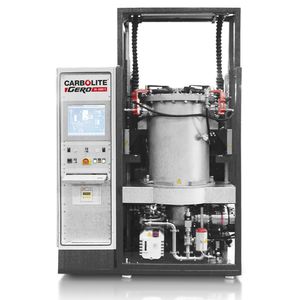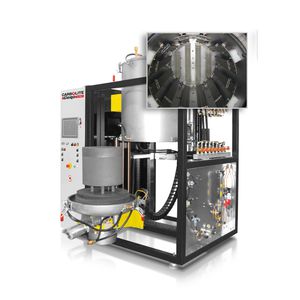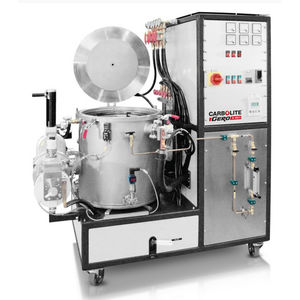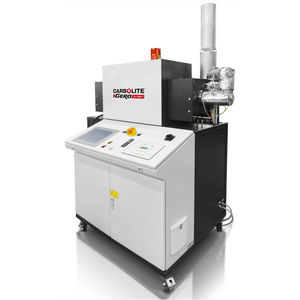
- Metrology - Laboratory
- Laboratory Equipment
- Chamber oven
- Carbolite Gero
- Company
- Products
- Catalogs
- News & Trends
- Exhibitions
Chamber furnace HTK seriessinteringgasvacuum
Add to favorites
Compare this product
Characteristics
- Configuration
- chamber
- Function
- sintering
- Heat source
- gas
- Atmosphere
- vacuum, inert gas, hydrogen
- Other characteristics
- pressure, laboratory
- Maximum temperature
1,350 °C, 1,800 °C
(2,462 °F, 3,272 °F)- Capacity
Max.: 600 l
(158.5 gal)Min.: 8 l
(2.11 gal)- Width
1,300 mm, 1,900 mm, 2,300 mm, 2,500 mm
(51.18 in, 74.8 in, 90.55 in, 98.43 in)- Height
2,100 mm, 2,200 mm, 2,500 mm
(82.68 in, 86.61 in, 98.43 in)- Depth
1,100 mm, 1,800 mm, 2,600 mm, 2,900 mm
(43.31 in, 70.87 in, 102.36 in, 114.17 in)
Description
Chamber furnaces of type HTK KE furnaces are insulated with ceramic fibre.
The rectangular design with a front door allows for easy loading and unloading. The HTK range is available in up to six different sizes. The smallest designs with a capacity of 8 litres and 25 litres are typically employed by laboratories for research and development. The 80 litre, 220 litre, 400 litre or 600 litre furnaces are predominantly used as pilot manufacturing systems or large scale production.
The furnaces can be used under a defined Oxygen mixture or 100 % pure Oxygen. The heating elements are CrFeAl, allowing temperatures of up to 1350 °C, or MoSi2 that allow temperatures up to 1800 °C. Inert gas atmospheres are possible; however, poor atmospheric quality must be accepted. Due to the porous nature of the insulation, vacuum operation is limited to a rough vacuum range for short durations.
Application Examples
ceramic injection moulding (CIM), debinding in air, sintering in air
Standard features
Hydrogen partial pressure operation if requested
Operation under air or with 100 % Oxygen in the HTK KE
Precisely controlled vacuum pumping speeds appropriate for powders
Data recording for quality management
Catalogs
Related Searches
- Furnace
- Chamber furnace
- Electric furnace
- Heat treatment furnace
- Drying furnace
- Laboratory furnace
- Combustion furnace
- Gas furnace
- Baking oven
- Industrial furnace
- Controlled atmosphere furnace
- High-temperature furnace
- Automatic furnace
- Vacuum furnace
- Digital furnace
- Annealing furnace
- Continuous furnace
- Forced convection furnace
- Programmable furnace
- Thermal furnace
*Prices are pre-tax. They exclude delivery charges and customs duties and do not include additional charges for installation or activation options. Prices are indicative only and may vary by country, with changes to the cost of raw materials and exchange rates.











